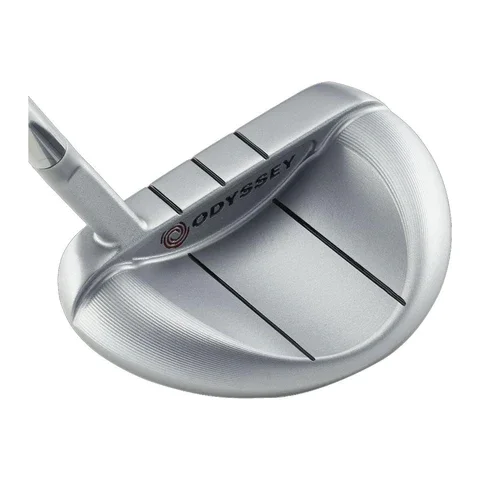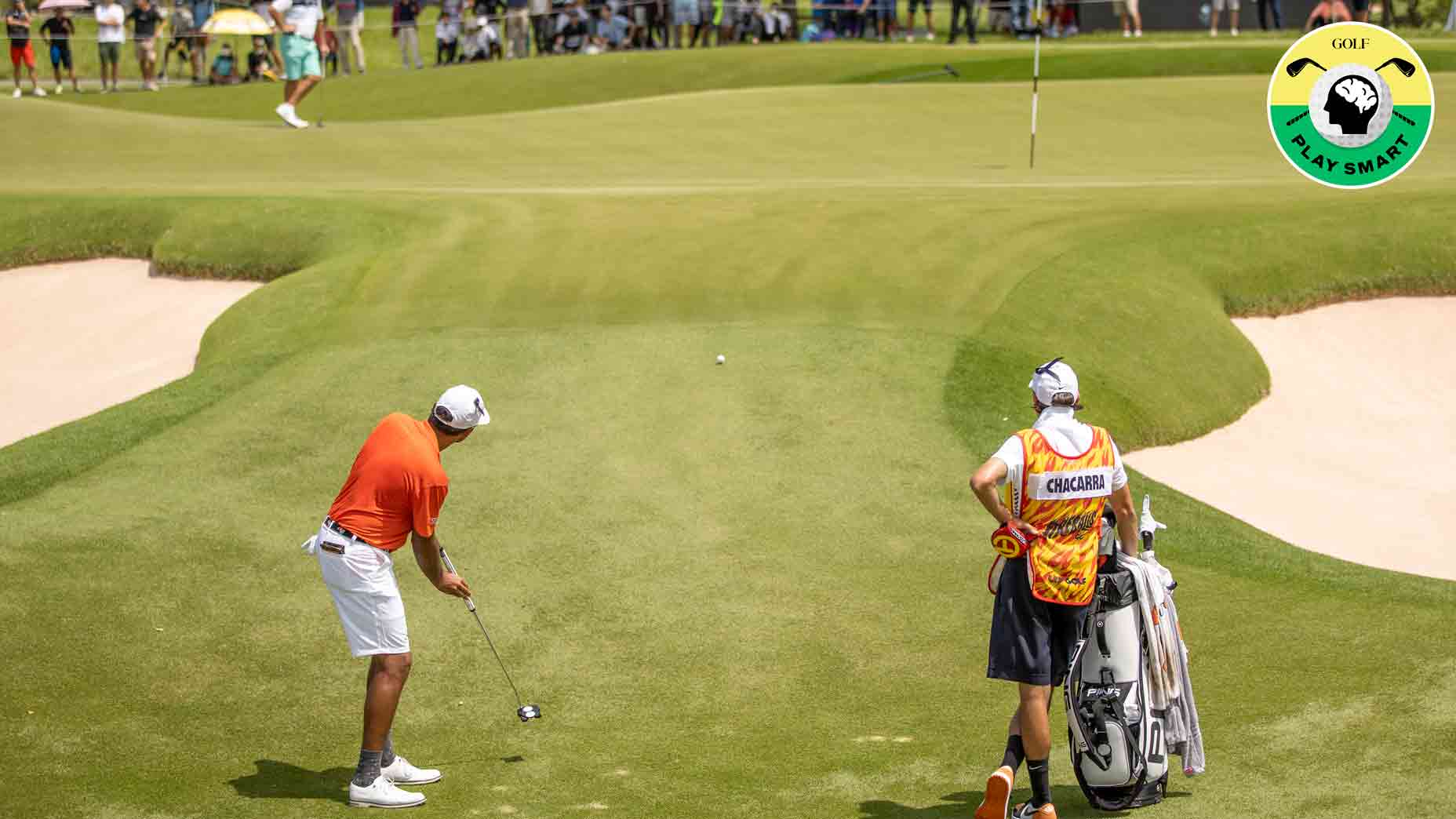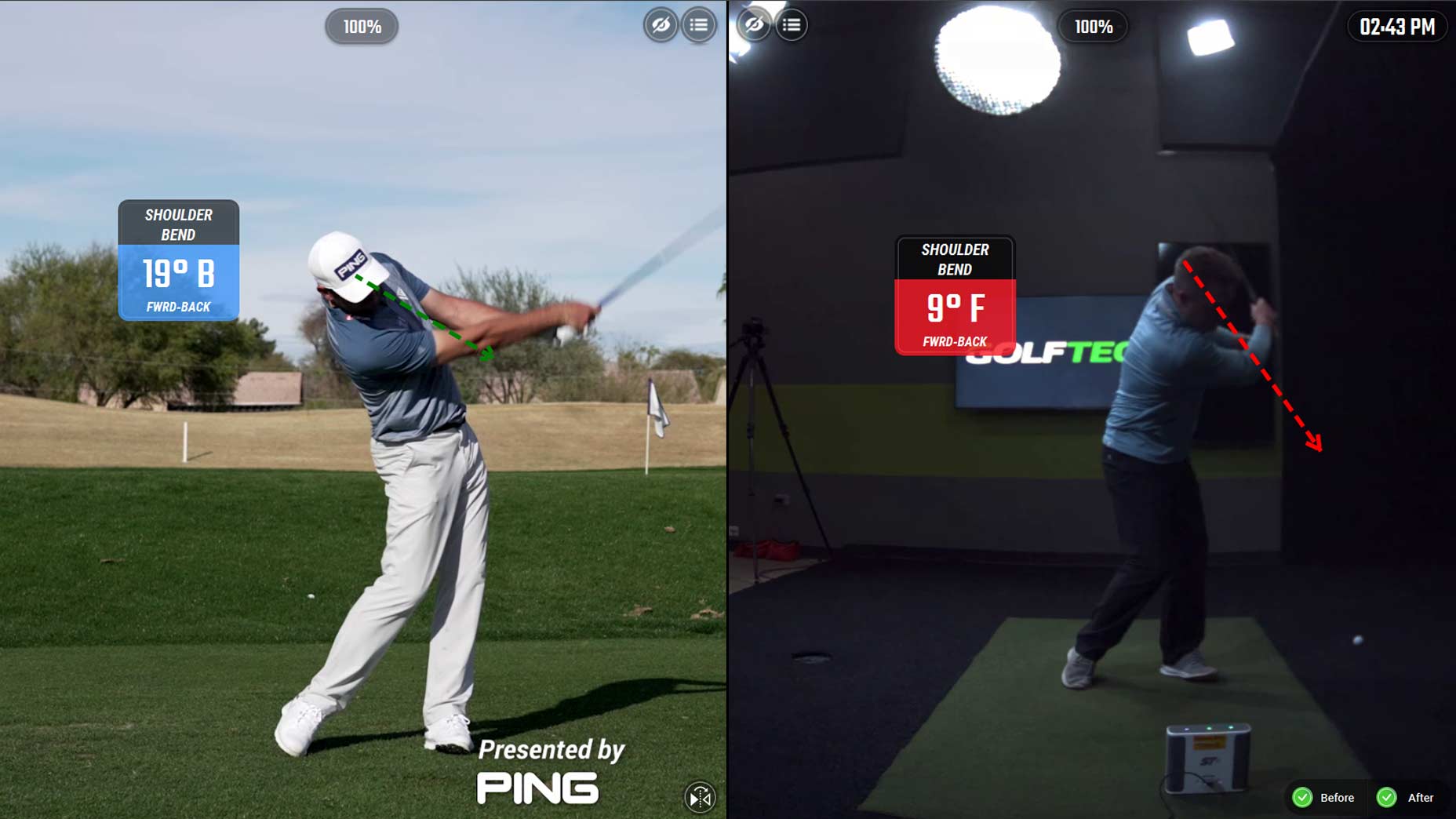Welcome to Play Smart, a regular GOLF.com game-improvement column that will help you play smarter, better golf.
Whether or not you refer to it by its slang name, there’s a good chance that you’ve witnessed a player use a “Texas wedge” during a round. That’s because the concept is simple: Using a putter (or other low-lofted club) from off of the green, rather than hitting a wedge.
Maybe it’s just the folks I’m playing with, but it seems like the Texas wedge is more popular than ever. Over my past few rounds, I’ve seen golfers putting from way off the green instead of risking a chunked or bladed shot with a wedge.
But is this a smart strategy? Are there rules that amateurs should know about putting from long range? What about the general reception from other players?
To help explain the ins and outs of the Texas wedge, we asked a couple of GOLF Top 100 Teachers to provide some basic information about it, as well as to give some pointers and rules for using one.
What do you know about the origin of the term?
James Sieckmann, Director of Instruction (Shadow Ridge Country Club): “Rumor has it that the term originated in the early 1900s in Texas, as the turf was brick hard and very difficult to get the club under the ball.”
Don Sargent Jr., Director of Golf Instruction (Scioto Country Club): “In 2004, Todd Hamilton won the British Open by consistently playing his hybrid club around the greens with extraordinary success.”
Jon Rahm used a ‘Texas wedge’ at the Masters, but does this mean amateurs should try it as well?
Sargent: “Absolutely! This shot should be considered even before a wedge is pulled out of the bag.”
Sieckmann: “Every player at some point putts from off the green; even the pros. I just like for amateurs to use it for the right reason — which is on firm fairway turf, or into the grain on Bermuda grass when there’s little green to work with between the collar and the hole. The wrong reason to play the Texas Wedge is because you are scared of chipping, at least long-term.”

Odyssey White Hot OG Rossie S Custom Putter
Is it ever frowned upon to use a Texas wedge?
Sargent: “By lesser-educated golfers, yes. Golfers who believe the wedge is to be played on all short shots are not aware of how to best score in golf.”
Sieckmann: “Unless your ball is in the rough and not the fairway, the Texas wedge certainly is not frowned upon.”
Are there rules for how far out a player should use a Texas wedge?
Sargent: “No. In firm conditions, this shot can be played from 30, 40, or 50 yards away from the hole. Remember, the low pitch and run that Nick Faldo played in the 1990 British Open? He holed it for eagle while running his shot through the Valley of Sin — on 18 at St. Andrews.”
Sieckmann: “The tighter and firmer the fairway grass, the longer you can be from the pin to play it. Both Hamilton at Royal Troon and Martin Kaymer at Pinehurst No. 2 often used a Texas wedge to win major championships. Although, Hamilton used a hybrid club instead of a putter, and played it as far as from 50 yards away.”
Similarly, are there any general rules about playing one?
Sargent: “A Texas Wedge is unequivocally the best choice for players with chipping issues. To play this shot, use a lesser-lofted club; a 6, 7, or 8-iron are usually great for short-to-medium length shots. Whereas a hybrid is more applicable for longer shots, uphill or two-tiered green shots.
“Use normal putting stroke fundamentals for this shot, as it is played with a stroke motion. Finally, use equal power as if you were putting from the distance you’re hitting from.”
For a player who struggles with chipping, is this the best short-term alternative, or do you suggest something else?
Sargent: “It shortens the swing, and lessens the need for wrist-hinging in the stroke — because it’s played with a stroking motion, not a hinging or swinging motion. The weight stays much more stable and on the left side, and the angle of attack is far shallower and more parallel to the turf. This means there’s less likelihood of hitting fat and topped or skulled shots.”
Sieckmann: “If you do play this shot with a fairway wood, choke down and stand close enough so that the toe of the club hangs down. Take your normal putting grip and swing. To really master this shot means practicing it to develop your touch.”
Finally, what positives and negatives are there to using a Texas wedge?
Sargent: “This shot will always advance the ball toward the target, and will eliminate mishits; often fat and thin shots. It will produce a very high percentage of positive scoring shots.”
Sieckmann: “Though it is a good short-term alternative for a player who struggles chipping, over time, it becomes a crutch and an enabler — so the fear factor of using a wedge just gets worse. To solve any problem long-term, players need to lean in and get both a technical and mental plan, which will allow them to attack the problem and not shy away from it.”










